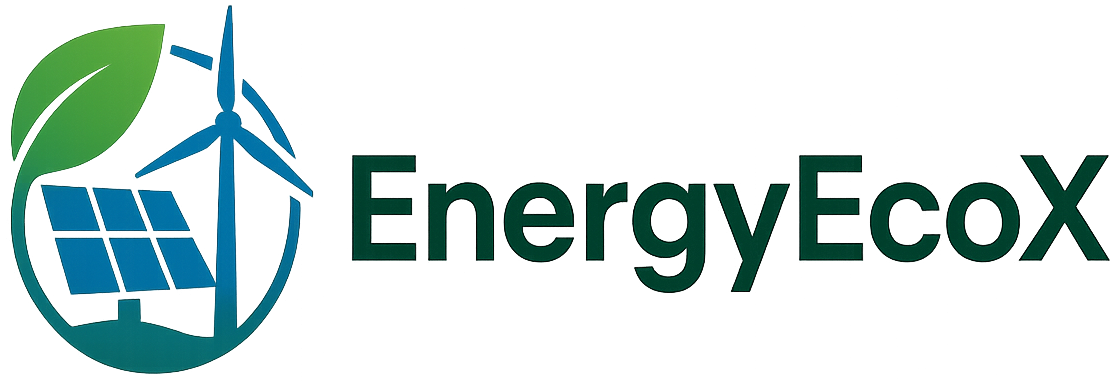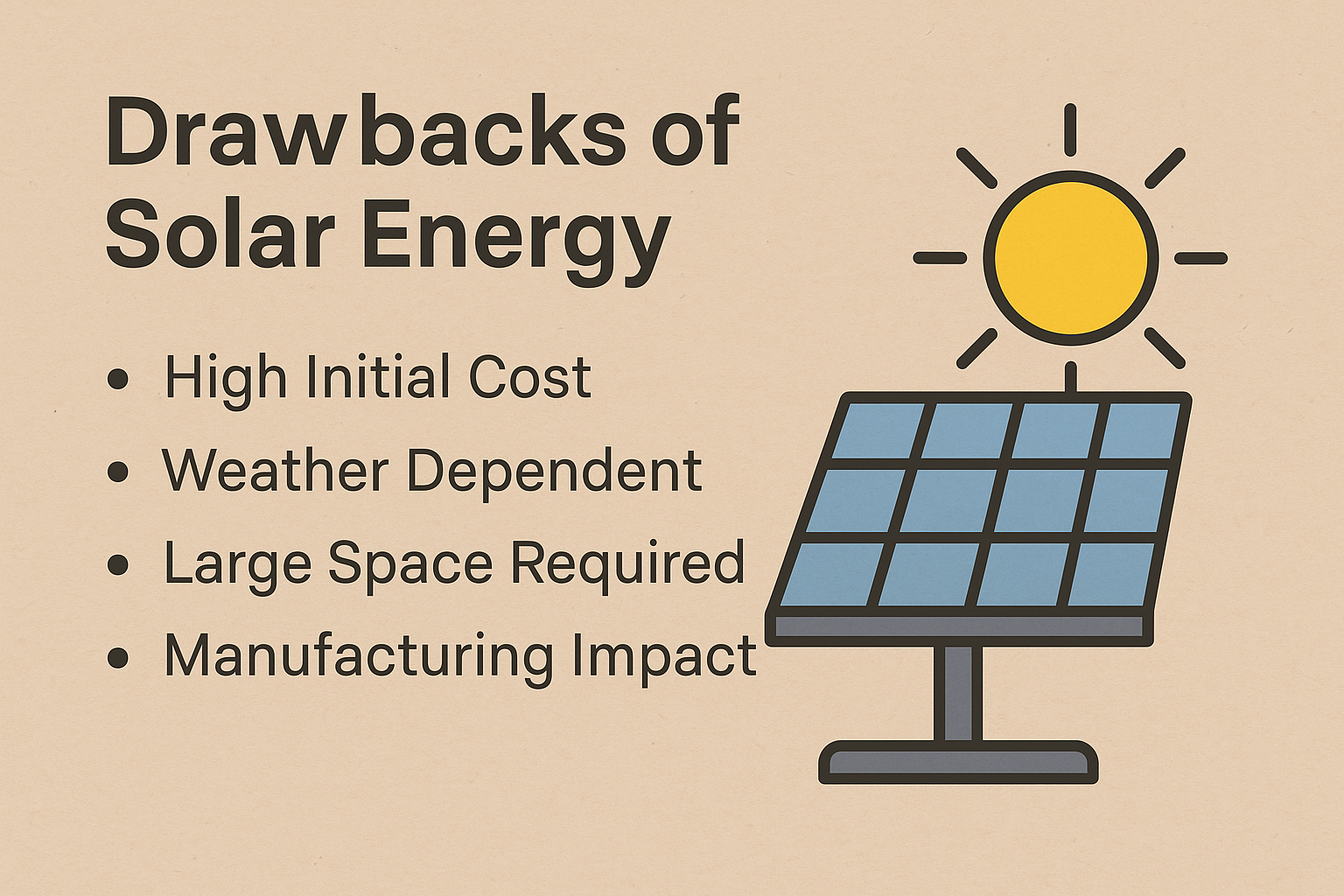Even the greatest things in life have their drawback. The very things we like most may disappoint us at some point. Even if we like something very much, perfection never always happens with everything. It is the same with solar energy. Although solar power has such great advantages, it is significant to learn about its disadvantages as well. Nowadays, it’s not completely reliable to depend on solar only, although things should improve with advancements. Although I believe these demerits shouldn’t bar you from considering solar, being informed will allow you to make the best decision.
High Initial Investment for Solar Panels
Perhaps the biggest single discouragement from going solar is the high initial investment in installing solar panels. Although costs vary depending on the state and supplier, the average cost of installation is usually in the range of $15,000 to $25,000, says the Center for Sustainable Energy. One-time cost is an extremely large stumbling block for many, especially those who just don’t happen to have that sort of money lying around—or don’t want to spend it all in one bite.
It’s true that the initial cost is steep, but the long-term savings can balance it out quickly. Saving a few hundred dollars per month on electricity can make solar panels pay for themselves in just a few years. For example, if your average electric bill is $200, you’ll spend $2,400 in one year and $24,000 in ten. Properly maintained solar panels often last far longer than a decade. Keep in mind: traditional electricity costs will continue to rise.
Aside from saving money, solar also helps in preserving the environment. Some guidelines follow to help you decide if solar will save you money in the long run.
Evaluate Your Monthly Electricity Bills
If your energy bill is consistently high, solar can cut it or even eliminate it. Even smallish bills can have astronomical amounts of expense from heating and cooling. The more you’re paying currently for energy, the more likely solar will pay off. Consider your average bill and how much you can save—even if you cut it in half.
The majority of solar companies also offer financing plans so you don’t have to pay in full initially. Plans for monthly payments make it easy. If you are determined to go solar, most companies will accommodate you on a budget-friendly payment plan.
Going Solar Pays Off in the Long Run
Though solar panels will work anywhere the sun shines, additional sunlight exposure equates to more energy production. Some places are better for solar use depending on geography and weather. Your roof design, angle, and neighboring shade will further influence energy output. The direct sun you have, the better you will save. Although some things—tree canopy, for example—can be manipulated, others cannot.
Solar Panel Installation Costs
The majority of the expense of solar is in the initial purchase and installation of the panels. Luckily, once this is done, they need minimal maintenance and are still very efficient for decades. Ask around your neighborhood and get quotes from three to five different companies. Good research is the key to getting the best deal for your money.
Check for Incentives and Rebates
The majority of homeowners qualify for solar panel incentives. As a case in point, federal tax credits enable you to deduct a percentage of the installation cost from your taxes. Individual states have other rebates and programs available depending on your location. Some states offer more than others, so it makes sense to see what’s available where you are located. The Database of State Incentives for Renewables & Efficiency is a good starting point.
Although these inducements will diminish as solar’s cost of production drops, they presently minimize costs at the point of installation significantly.
Leasing Solar Equipment
Purchasing isn’t the only way to access solar. Leasing is an option that reduces upfront expenses. You’ll make monthly payments to use the equipment for a set period and return it at the end of the term. Keep in mind: leased systems don’t qualify for tax incentives and won’t increase your property’s value.
Other Solar Power Disadvantages
If you’re thinking about going solar, treat it as a long-term investment. Before committing, consider a few other limitations.
Location Plays a Big Role
Where you live largely will affect how efficiently solar power will function. There are some places that get more direct sun than others. If your area does not see much sun throughout the year, solar panels will not function as well. Living farther from the equator—like in Canada, Russia, or Northern Europe—will lower solar panel effectiveness. Hawaii or Ecuador is ideal, though.
Seasons also affect the energy yield. Summer generates more power than winter. Solar panels, however, still work even on cloudy days, just less effectively. But solar power can still be tapped, but at a lower rate.
Large Areas for Large-Scale Installations
The majority of home owners install solar panels on rooftops, which is generally sufficient. But for large companies or housing colonies, a large area is required to have enough electricity. These areas must be dedicated and used solely for solar use.
For example, there is a 173-acre solar farm in Spain that supplies 12,000 homes. That land is dedicated to solar only and cannot be used for any other activity.
Problems Regarding Energy Reliability
One of the most common questions is: What happens when the sun isn’t out? Although solar panels do not generate power during the evening, power that has been gathered during the day can be stored and used afterwards. Utilize energy judiciously—take advantage of daylight while in supply and don’t use excess light to conserve optimum stored energy.
You can also remain connected to the traditional grid for backup power, but this means you’ll still receive an electricity bill.
Pollution from Manufacturing
It may seem counterintuitive, but producing solar panels does involve some pollution. The manufacturing process uses hazardous materials that can impact the environment. However, this level of pollution is minor compared to fossil fuels. It’s still worth being aware of these impacts when making a decision.
Common Solar Panel Problems
Solar panels are low-maintenance but not free of problems. If your system seems faulty, address it in time before things deteriorate. The following are some problems to be aware of:
Snail Trail Contamination
Snail trails appear in the form of pale brown marks on panels, sometimes years after installation. They’re usually the result of imperfections like inferior-quality silver paste used in the manufacturing process. This can lead to oxidation because of moisture and micro-cracks that impact panel efficiency and life.
These flaws can even cause system failure earlier, and regular inspection is, therefore, imperative. Regular maintenance can make a solar system remain functional for 20+ years.
Bird-Related Damage
While birds are adorable, they are a nuisance when they nest on your panels. This could interfere with sunlight and reduce performance. If birds are common in your area, consider installing mesh guards or protective covers to prevent them from getting in the way.
Inverter Malfunctions
While the panels last for decades, inverters—which convert energy for home use—usually need replacing every 10 to 15 years. These are a critical part of the system and require attention over time
Wiring Problems
Faulty or damaged wiring can severely impact your system’s performance. Loose connections, corrosion, and oxidation may interfere with electricity flow. If you’re not experienced, hire a professional to ensure everything is safely installed.
Roof Compatibility Issues
Panels typically cover the roof, but faulty installation can harm it. If you notice any issues with the roof after installation, report to the installer. It’s also wise to check your roof before to ensure that it can support the solar system.
Final Thoughts on Solar Setbacks
Even though there are many disadvantages of solar power, all of them can be avoided with planning and upkeep. Solar systems offer very minimal hassle in the long term with correct installation and regular maintenance. The long-term advantages usually overcome the short-term disadvantages. If you’re still interested even after the drawbacks, then you’re ready to continue with solar power.


Leave a Reply